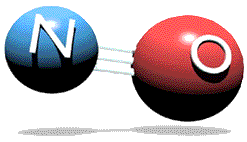The FitEyes Approach to Home Eye Pressure Monitoring is a Disruptive Innovation
 This is from an email conversation between me and an ophthalmologist on the topic of research data.
This is from an email conversation between me and an ophthalmologist on the topic of research data.
 This is from an email conversation between me and an ophthalmologist on the topic of research data.
This is from an email conversation between me and an ophthalmologist on the topic of research data.
I am an attorney and my spouse is a glaucoma patient. In the past I have volunteered some of my time to help FitEyes look into questions related to research projects and other activities related to the non-medical treatment of elevated
intraocular pressure. I would like to share my feedback in two areas:
Here are some of the outstanding questions that apply directly to the project presently under discussion, which is related to using a relaxation technique to lower intraocular pressure.
Hello Everyone,
This is what I have discovered since applying self-tonomtery.
My elevated intraocular pressure in the evening seems to decrease when I lie down and read. However this could be due to other factors such as the eye drops kicking in. How would I go about testing this further?
Abstract
Purpose: Nitric oxide (NO) is involved in a variety of physiological processes including ocular aqueous humor dynamics by targeting mechanisms that are complementary to those of prostaglandins. Here, we have characterized a newly synthesized compound, NCX 125, comprising latanoprost acid and NO-donating moieties.
Methods: NCX 125 was synthesized and tested in vitro for its ability to release functionally active NO and then compared with core latanoprost for its intraocular pressure (IOP)-lowering effects in rabbit, dog, and nonhuman primate models of glaucoma.
 Results: NCX 125 elicited cGMP formation (EC50 = 3.8 ± 1.0 μM) in PC12 cells and exerted NO-dependent iNOS inhibition (IC50 = 55 ± 11 μM) in RAW 264.7 macrophages. NCX 125 lowered IOP to a greater extent compared with equimolar latanoprost in: (a) rabbit model of transient ocular hypertension (0.030% latanoprost, not effective; 0.039% NCX 125, ∆max = −10.6 ± 2.3 mm Hg), (b) ocular hypertensive glaucomatous dogs (0.030% latanoprost, ∆max= −6.7 ± 1.2 mm Hg; 0.039% NCX 125, ∆max = −9.1 ± 3.1 mm Hg), and (c) laser-induced ocular hypertensive non-human primates (0.10% latanoprost, ∆max = −11.9 ± 3.7 mm Hg, 0.13% NCX 125, ∆max = −16.7 ± 2.2 mm Hg). In pharmacokinetic studies, NCX 125 and latanoprost resulted in similar latanoprost-free acid exposure in anterior segment ocular tissues.
Results: NCX 125 elicited cGMP formation (EC50 = 3.8 ± 1.0 μM) in PC12 cells and exerted NO-dependent iNOS inhibition (IC50 = 55 ± 11 μM) in RAW 264.7 macrophages. NCX 125 lowered IOP to a greater extent compared with equimolar latanoprost in: (a) rabbit model of transient ocular hypertension (0.030% latanoprost, not effective; 0.039% NCX 125, ∆max = −10.6 ± 2.3 mm Hg), (b) ocular hypertensive glaucomatous dogs (0.030% latanoprost, ∆max= −6.7 ± 1.2 mm Hg; 0.039% NCX 125, ∆max = −9.1 ± 3.1 mm Hg), and (c) laser-induced ocular hypertensive non-human primates (0.10% latanoprost, ∆max = −11.9 ± 3.7 mm Hg, 0.13% NCX 125, ∆max = −16.7 ± 2.2 mm Hg). In pharmacokinetic studies, NCX 125 and latanoprost resulted in similar latanoprost-free acid exposure in anterior segment ocular tissues.
Conclusions: NCX 125, a compound targeting 2 different mechanisms, is endowed with potent ocular hypotensive effects. This may lead to potential new perspectives in the treatment of patients at risk of glaucoma.
This year the World Glaucoma Congress (WGC) is taking place in the United States (Boston, MA) from July 8th to 11th. Dr. Ritch will be there, as will Marcel and I.
I believe all of you know, or know of, Dr. Ritch. Marcel is a key founder of the International Society for Self-Tonometry (ISST), of which Dr. Ritch is Honorary Chairman. Marcel is a driving force behind getting me and several other self-tonometrists together in Boston.
Are there limits to the duration of high quality of life? Are there limits to healthy life for a human brain? [These questions are relevalant for vision as well as cognitive health because the optic nerve is part of the central nervous system.]
Age-related macular degeneration (AMD) is a leading cause of irreversible blindness in the world. Although the etiology and pathogenesis of AMD remain largely unclear, a complex interaction of genetic and environmental factors is thought to exist. AMD pathology is characterized by degeneration involving the retinal photoreceptors, retinal pigment epithelium, and Bruch’s membrane, as well as, in some cases, alterations in choroidal capillaries.